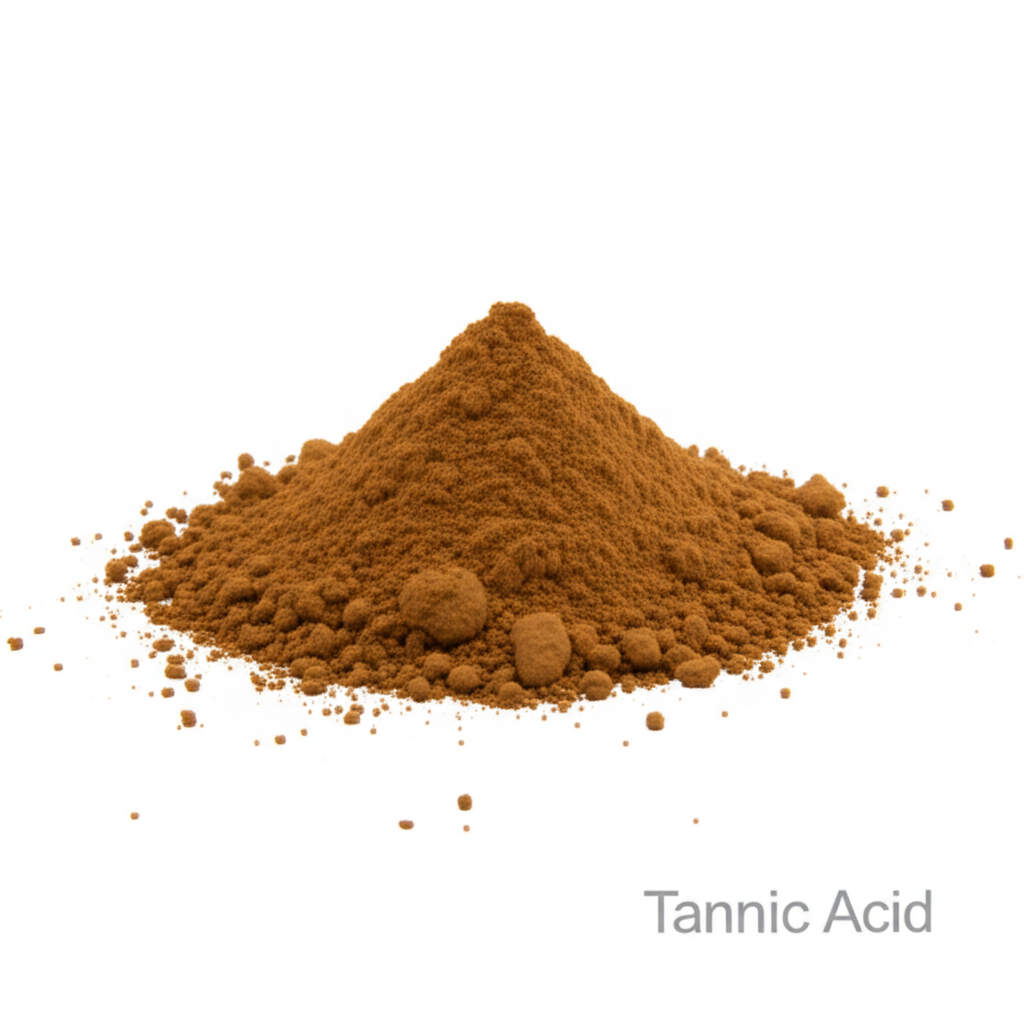Tannic Acid (CAS 1401-55-4): A Versatile Polyphenolic Compound for Industrial and Pharmaceutical Applications
Discover the multifaceted applications of Tannic Acid, a natural polyphenolic powerhouse, across diverse industries.
Get a Quote & SampleProduct Core Value

Tannic Acid
Tannic acid is a complex polyphenolic organic compound that finds extensive use in various industrial and pharmaceutical sectors. Its unique chemical structure and properties make it a valuable ingredient for numerous applications, from traditional crafts to modern chemical processes.
- Harnessing the power of tannic acid for leather tanning provides exceptional durability and suppleness to leather goods, a key process in the industry.
- Leveraging tannic acid in food industry applications, such as a clarifying agent for beverages, enhances product quality and stability.
- Exploring the use of tannic acid as a mordant in dyeing processes ensures vibrant and long-lasting color fixation on textile fibers.
- Utilizing pharmaceutical grade tannic acid as a raw material supports the development of effective medicinal formulations.
Benefits and Advantages
Versatile Applications
From tannic acid industrial applications in metal treatment to its role in ink manufacturing, its versatility is unmatched, meeting diverse industry needs.
Natural Origin and Sustainability
As a naturally derived compound, tannic acid offers a sustainable alternative for many chemical processes, aligning with eco-friendly manufacturing trends.
Enhanced Product Performance
Its astringent and precipitating properties contribute to improved product performance, whether used for tannic acid corrosion inhibitor functions or as a clarifying agent.
Key Applications
Leather Tanning
As a primary agent in leather tanning, it imparts strength, flexibility, and resistance to decomposition, a testament to its effectiveness.
Textile Dyeing
In textile dyeing, it acts as a crucial mordant, improving dye uptake and fastness, ensuring brilliant and durable colors.
Food and Beverage
Its use as a clarifying agent in beer clarification and other beverages, and as an antioxidant, makes it a valuable food additive.
Pharmaceuticals
In the pharmaceutical realm, it serves as a key ingredient for its astringent and hemostatic properties, crucial for various medicinal preparations.
